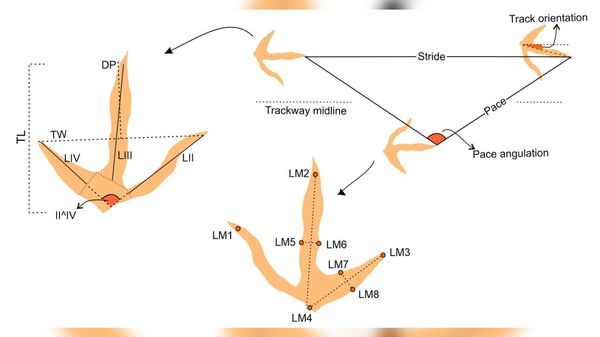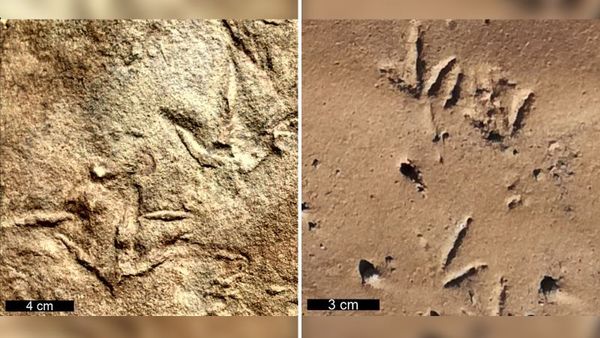Birdlike footprints from over 210 million years ago have been discovered in southern Africa, revealing the presence of bipedal reptiles with feet similar to birds. These findings, published in the journal PLOS One, showcase the oldest known birdlike tracks to date. While it is unclear which animals made these tracks, they could potentially provide new insights into the evolution of birds.
According to Dr. Miengah Abrahams, the lead author of the study from the University of Cape Town, the footprints were likely made by dinosaurs due to their age. The tracks resemble those of theropods, a diverse group of meat-eating dinosaurs known for their bipedal stance and three-toed feet. However, the exact relationship between these animals and birds remains uncertain. They could represent a missing link in avian evolution or be a separate group of reptiles that evolved birdlike feet independently.
The footprints, which were initially discovered in the mid-20th century, were named Trisauropodiscus by paleontologist Paul Ellenberger. The name is based on trace fossils, or impressions left behind by animals, rather than actual fossilized bones. Over the years, paleontologists have debated whether Trisauropodiscus tracks have an avian connection, with some arguing that they are birdlike while others remained skeptical. Different shapes and variations in footprints can make it challenging to determine the physical characteristics of extinct animals, especially when there are no other fossilized remains available.
Dr. Julia Clarke, a professor of vertebrate paleontology, explains that footprints provide essential evidence but also bring uncertainties due to the limited nature of the data. Nonetheless, these birdlike tracks offer intriguing insights into the ancient reptile group known as archosaurs, which includes dinosaurs, pterosaurs, and crocodilians. The discovery of birdlike feet in an unknown member of this group adds to our understanding of morphological diversification during this critical time period in archosauria.
The investigation into these footprints began in 2016 when the University of Cape Town team followed in the footsteps of Paul Ellenberger, meticulously documenting the sites using modern standards. During their fieldwork in Lesotho, the team found numerous birdlike tracks from the Triassic Period. After further analysis and the creation of 3D digital models, the scientists classified the tracks into two morphotypes. Morphotype I tracks were non-avian and had slightly longer, rounder toes with distinct “heel” impressions made by the pads of the third and fourth digits. Morphotype II tracks closely resembled those of avian species from the Cretaceous Period and modern birds, with wider toes and a wide splay of digits.
The oldest known fossil evidence of paravians, the dinosaur group that includes the earliest birds and their closest relatives, dates back to the middle Jurassic Period. However, the discovery of the Morphotype II Trisauropodiscus tracks, which are at least 210 million years old, suggests that birdlike feet are even more ancient. This finding contributes to our ongoing understanding of dinosaur and bird evolution.






